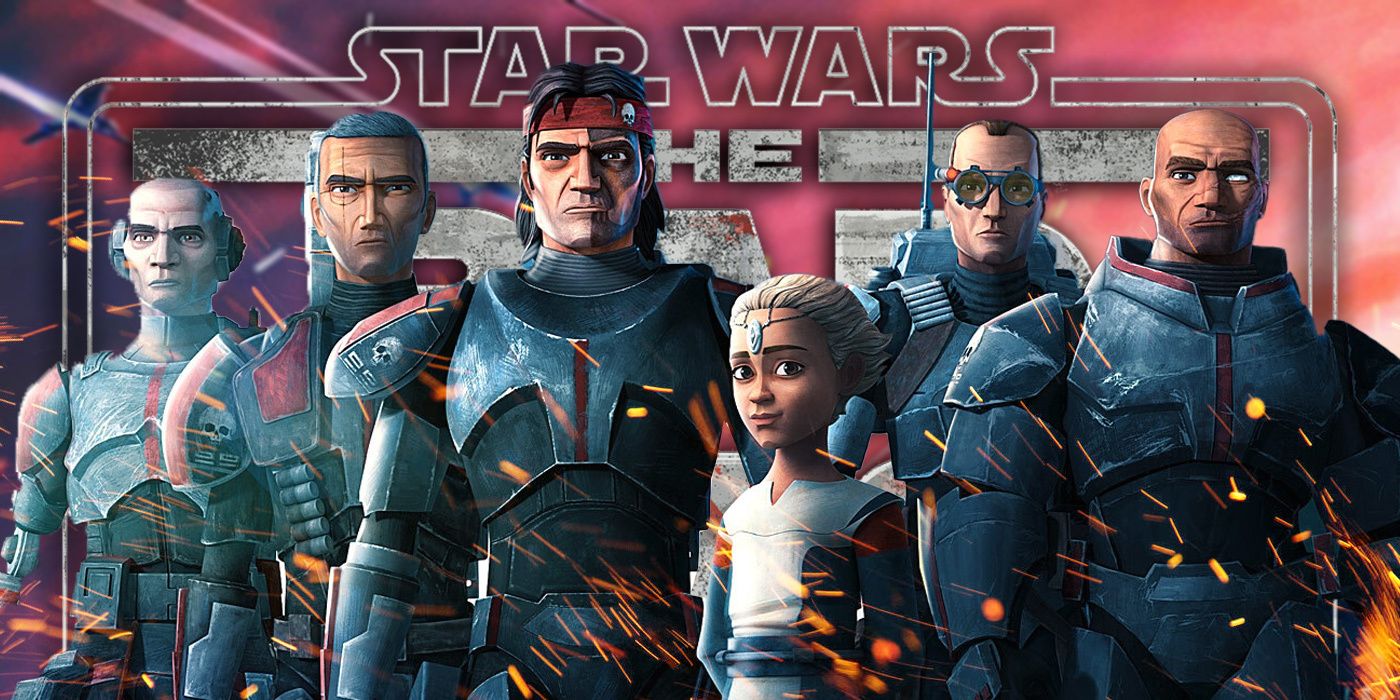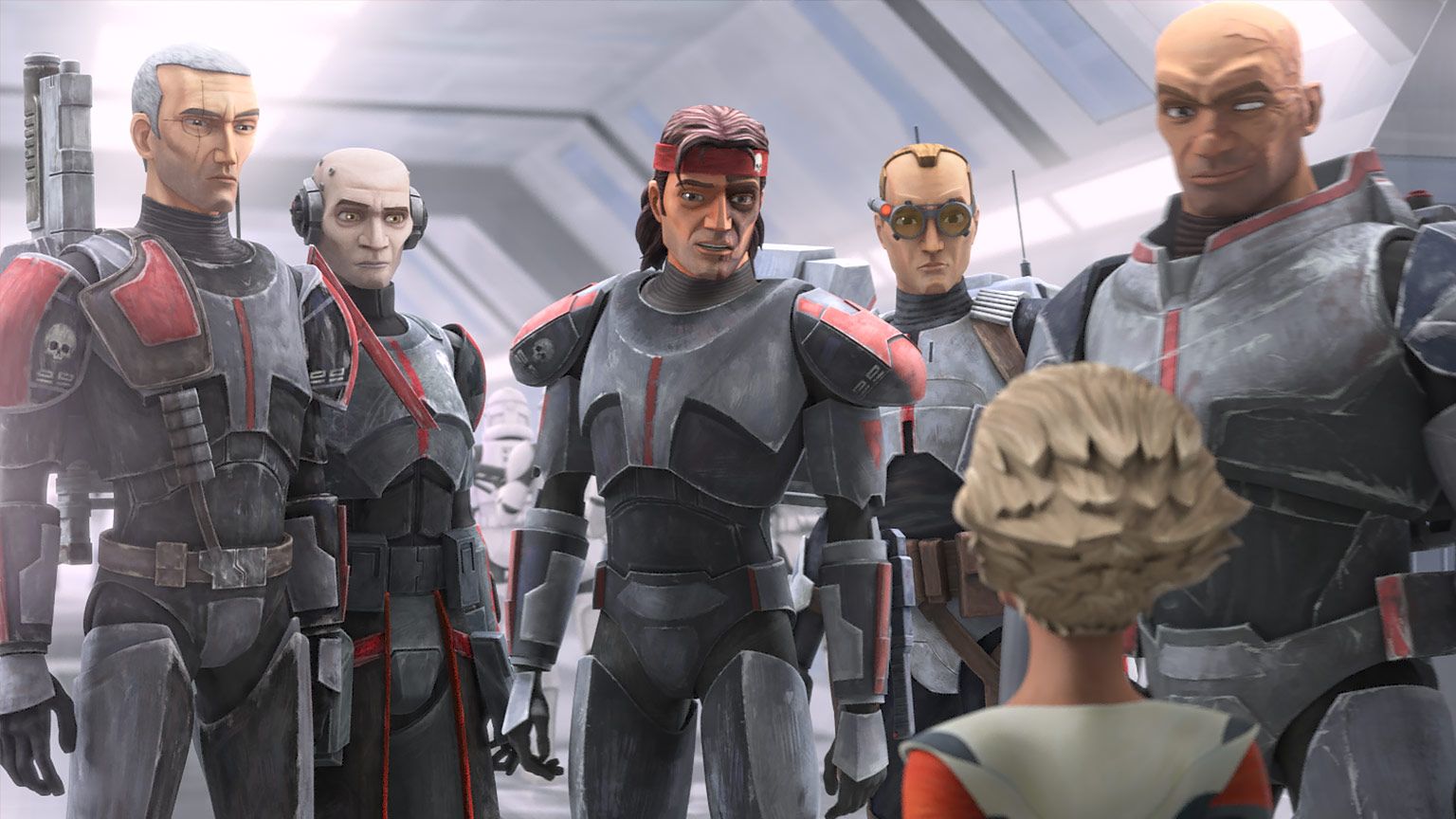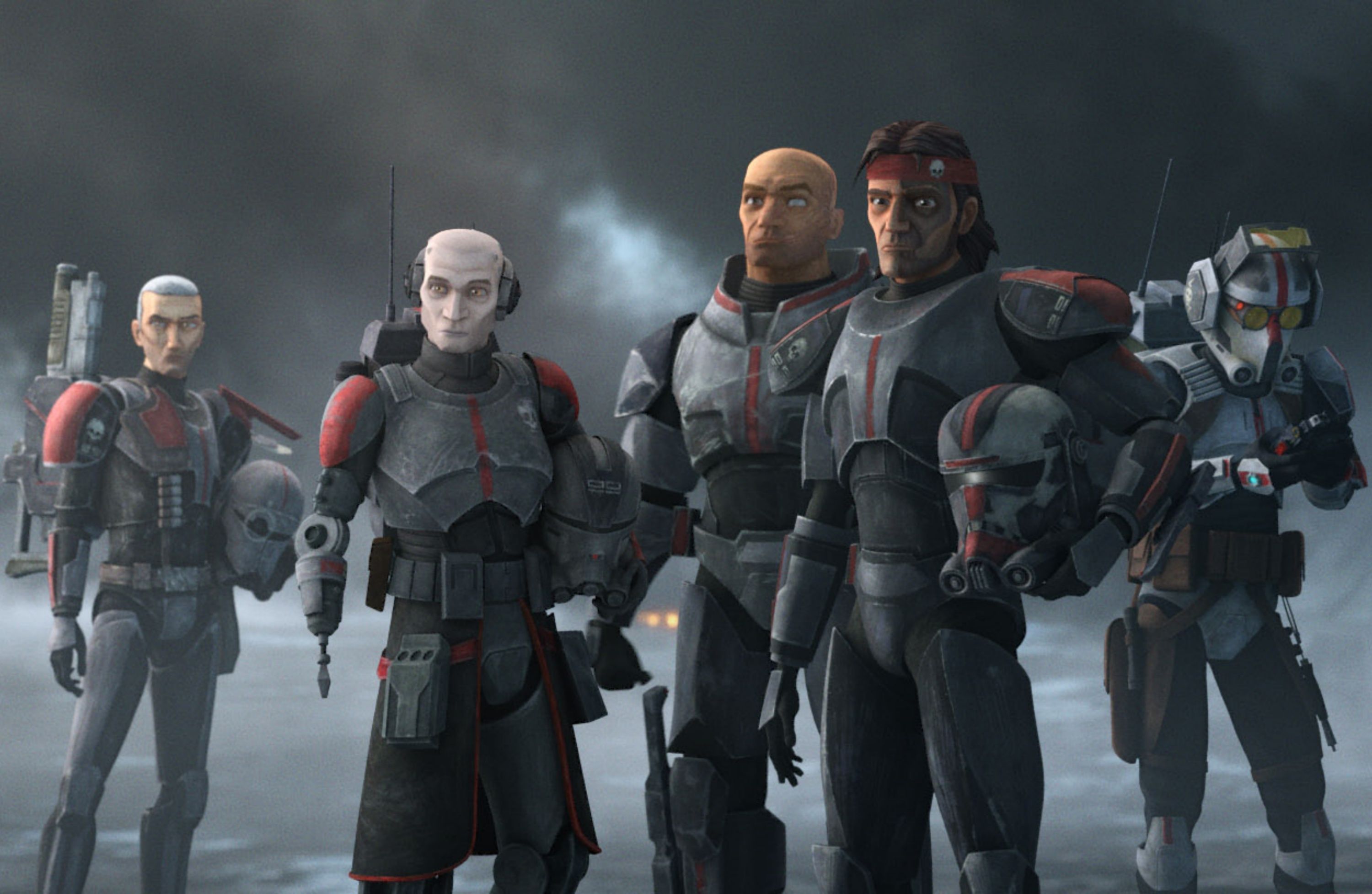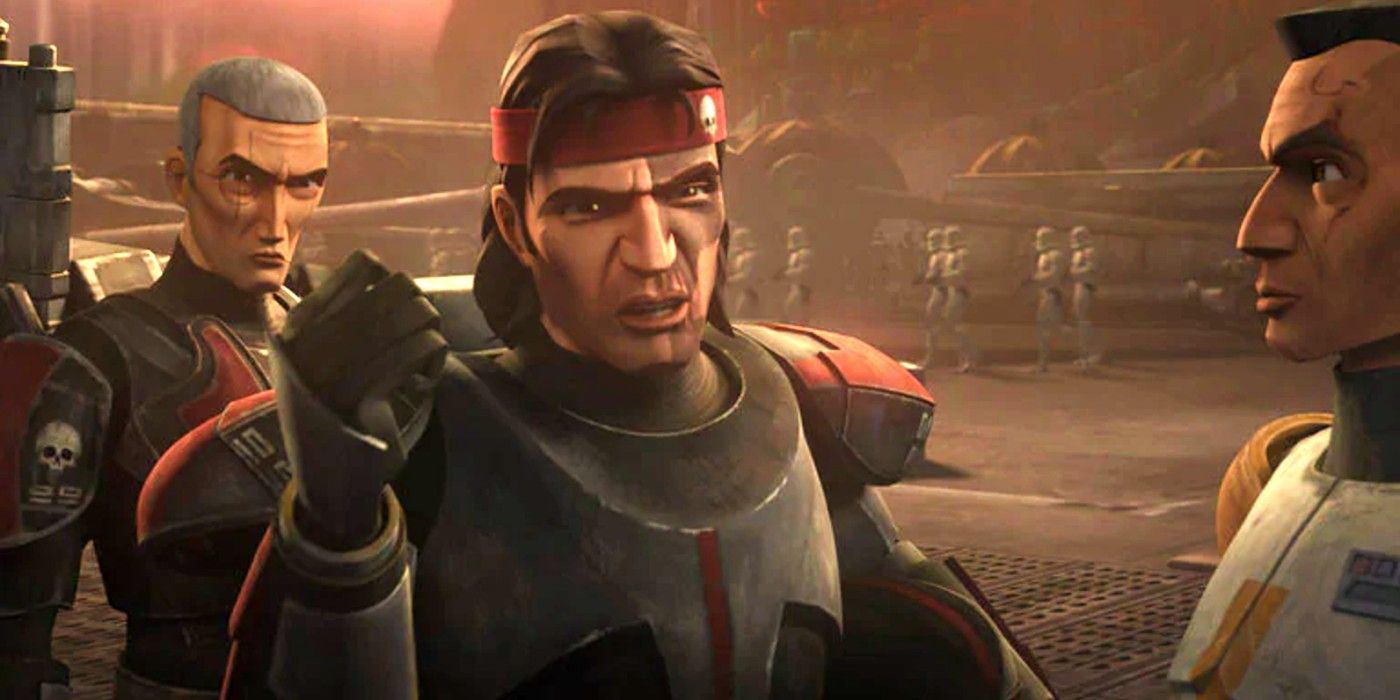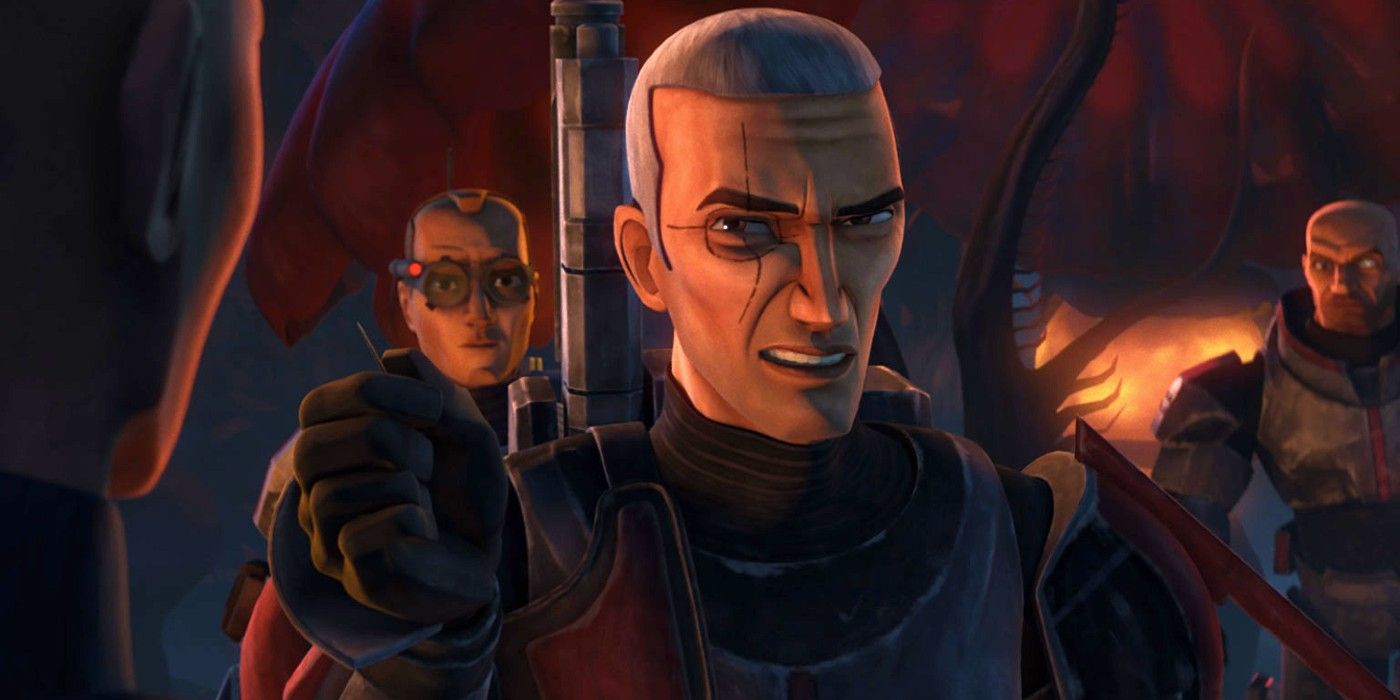Season one of Star Wars: The Bad Batch is a great deviation from the rest of the Star Wars franchise because it doubled down on the promise made by Star Wars: The Clone Wars, which was to keep the focus on the clones. The sequel/spin-off to the series created by Dave Filoni focuses on the ongoing adventures of Clone Force 99 (all voiced by Dee Bradley Baker), an elite squad of clone troopers with unique mutations in their DNA.
Following the execution of Order 66, the group is forced to adapt to an entirely new mission: to survive and find a new purpose in the aftermath of the Clone Wars, and the looming rise of the Galactic Empire. While we’ve seen our fair share of movies, shows, and games from this specific era in Star Wars, the first Season of The Bad Batch stands out as being a story about lost soldiers who struggle to survive in a world that doesn’t need them anymore. It’s the strongest opening for a television show in the franchise because it doesn't focus any Jedi, Sith, or galaxy-threatening conflict at the center. What it focuses on instead is in being a small-scale family drama that feels less like Joseph Campbell and more like Cowboy Bebop.
The Season finale hinted at bigger things to come, and with the second Season slowly approaching, it seems like a good time to look back at why The Bad Batch’s grounded approach with its characters makes for such an engrossing piece of Star Wars lore, resulting in one of the best stories in the Disney era. Despite most of its characters being voiced by the same actor, each clone in the Bad Batch is diverse, interesting, and stands out. You have Hunter, the leader of the group (who looks less like Temuera Morrison and more like Star Wars’s John Rambo), Tech (the ship expert), Wrecker (the muscle), Echo (a clone who was re-modified as a cyborg), Crosshair (the sniper), and Omega (a child who’s revealed to be the last pure clone model that can be used for replication, voiced by Michelle Ang). One can watch a rag-tag group of clones such as these and assume it’s the franchise’s attempt at having their own A-Team, but head writer Jennifer Corbett gives each character an arc that continuously challenges their role in the Republic, giving each clone an added amount of depth that even The Clone Wars never went to.
Throughout the course of the Season, Omega and the clones are constantly on the run from Crosshair (Dee Bradley Baker), who defected and joined Imperial forces after questioning Hunter’s motives during Order 66. This forces the group to lie low in shady new parts of the Outer Rim and take odd-jobs from whoever is offering, as a means to make money. It’s something we’ve barely seen from anything in mainstream Star Wars, as it gives us a story where the characters make choices that are more relatable to audiences. The strongest examples of that being Hunter and Crosshair.
Hunter, as the leader of the group, already had to look out for the safety of his comrades during the Clone Wars, as it was a duty that, for the majority of their lives, was only applicable to the battlefield. Once he’s introduced to Omega and realizes the dangers of the Empire, it puts Hunter and the crew in a difficult position where they must face the reality that the world doesn’t need clones anymore. The Empire at this point is already in the process of replacing them with normal people, and their unknown plans for Omega forces Hunter to go against the regime to protect their sister. What follows throughout the Season is a story arc throughout which Hunter has to act as both a leader to his group and a father figure to Omega, whose only knowledge of the world is confined to her time previously in Kamino. It makes for fascinating episodes where he and the rest of the squadron must adapt to their new dispositions and find purpose in a world that has no need for them.
This is a stark contrast to Crosshair, who by the Season’s end is already one of the most interesting antagonists in all of Star Wars. Serving as the group’s long-range specialist, Crosshair’s purpose was the same as all the other clones during the war, which was to execute any orders that were given to him. When he realizes that Hunter allowed a Jedi padawan to escape during Order 66, it makes him distrust his former squad leader, leading him to join the opposition and hunt his colleagues down. The first couple of episodes lead us to believe that this is just his innate programming due to his inhibitor chip, but the group slowly realizes that it’s much more complex.
In the episode "Return to Kamino," it’s revealed that Crosshair had his inhibitor chip removed some time before the events of Order 66, and his actions were only due to his inability to move away from being a soldier. It’s an interesting choice for the show to make for its villain, and is in some ways a natural reaction that a character like Crosshair can make. He’s a clone trooper who refuses to accept that his role in the war is over, leading him to commit horrific acts in the name of his new republic. Crosshair deep down fears having to change like his brothers had, and is content with siding with the Empire because war is all that he knows. There are hints that Crosshair is capable of changing, however, given that he saves Omega from drowning in the Season finale, setting that stage for an emotional war between morals and duties within Crosshair - honing in on the gray area subtleties of the fight between the light side and the dark.
One of the common staples that comes with Star Wars stories as of late is that they’re filled with appearances of characters from other parts of the franchise. The Bad Batch is no exception to that, with episodes featuring classic characters like Grand Admiral Tarkin (Stephen Stanton) to others that can currently be seen in other projects such as Fennec Shand (Ming-Na Wen) from The Book of Boba Fett. What makes these guest appearances different from others in the franchise is that they’re treated with little importance to the Bad Batch. They exist as side characters that help illustrate the pressures of living in a world where the Empire is the new world order.
A perfect example of this is the inclusion of Cad Bane (Corey Burton), a character who was originally introduced in The Clone Wars. Bane shows up in the eighth episode of the Season, titled “Reunion”, as a bounty hunter hired by the Kaminoans to capture Omega. The reintroduction to Bane is obviously a huge deal to anyone who watched Clone Wars, but his inclusion into the story for The Bad Batch is treated as minimal as it can be. To Clone Force 99, Cad Bane is just a bounty hunter who just needs to finish a job; a recurring force that the group has to deal with now that they’re on the run. The difference between something like Cad Bane in The Bad Batch and, say, Luke Skywalker in The Mandalorian is that Luke was a goal that the characters needed to reach; he served as the endgame for Grogu’s arc in being the Jedi that he needed to be with (his own kind so to speak). Cad Bane, however, is simply a cog in the chain for Omega and her brothers; another obstacle that the team has to overcome in the new world they live in.
Another great appearance from Star Wars past that strengthens the world-building for The Bad Batch is that of Hera Syndulla (Vanessa Marshall) from Star Wars Rebels. Hera appears in the episodes “Devil’s Due” and “Rescue on Ryloth”, a two-part storyline that doesn’t focus on the Bad Batch until the second episode. While there’s been some criticism in having an episode star an established character, it works within the context of showcasing the terrifying influence the Empire has had on the galaxy. The arc focuses on Hera and other Twi'lek civilians as they attempt to stop an Imperial station from being established (who the Bad Batch view as just another job that they’re hired for), following a statement their senator gave to the people to let go of their arms and support the Empire. The episodes not only give context for Hera’s actions later on in Rebels, but also provides an intense story about treason, the influence of the Empire, and how even the goodwill of freedom fighters can crumble under the weight of political power.
Bad Batch doesn’t work because it wants to be concerned with the Skywalkers or what the Emperor’s doing, it works because it functions as a story about lost, hard-working people first, and as a Star Wars story second. Having a show about this strange family that are just trying to get by and find their own little place in the universe is an idea that’s unique and appropriate for the galaxy far, far away. Star Wars: The Bad Batch is a great show with even greater potential for the franchise. Sure, it might be interesting if the second Season’s scope gets bigger, but, as we’ve come to know time and time again with Star Wars, bigger doesn’t always mean better.

